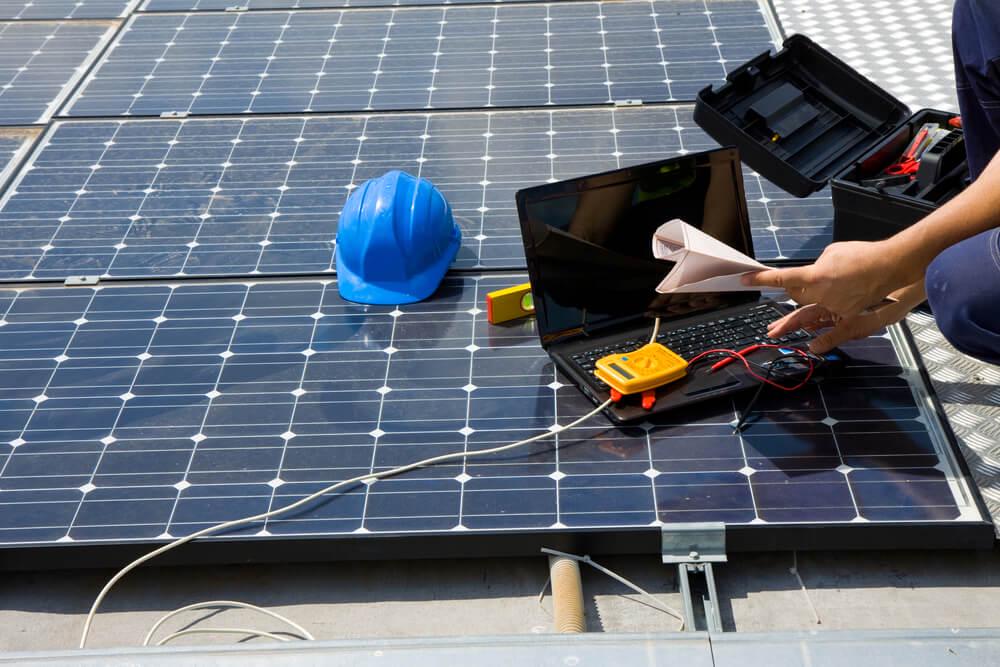Every now and then you will need to do some maintenance to your PV system but before you do, you must know exactly how to turn the system off and how to switch it back on!
Sometimes consumers do not completely understand how to do this procedure, therefore in this article we will explain it to you detail by detail.
First, you must understand that the PV system is separated into n two parts, the AC side and the DC side.
AC stands for alternating current, while DC stands for direct current. The difference between these two lies in the alternating pattern, since AC has a continued period over time oscillating between two values, while the DC current is constant.
You can find more information regarding AC and DC currents here.
On a PV system the difference is marked by the inverter. On the output of this equipment there is the AC side that is connected to the grid and to your house, while on the input, there is the DC side.
The device is always needed since solar panels produce DC, while the loads consume AC.
How to Turn OFF Your Solar PV System
The first thing that must be done is to turn off the AC side.
In order to do this, you must go to the meter box and switch off the AC inverter main supply.
After that you must turn off the AC breaker. From that moment, your PV system will stop delivering energy to the grid.
Once you have turned off the AC side, turn off the DC breaker or switch, generally located in the combiner box of your system. Now your whole PV system is turned off, since this will stop the flow of current to the inverter. Your system will now be safe to work on.
How to Turn Your Solar PV System Back ON
Simply do all the procedure in reverse.
Start with turning on the DC side and then turning on the AC side.
If it happens that your inverter does not come online again, you will need to call your solar installer.
Special Considerations for Energy Storage Systems
The steps that we have just explained refer to all PV systems.
However, some special consideration must be taken into account if you have purchased an off-grid or grid-tied with battery backup system. The difference mainly relates to the batteries.
If you have energy storage, then it is likely that the batteries will also have a DC breaker.
In this case, it is recommended that you turn off the DC breaker from the battery bank after disconnecting the DC breaker on the combiner box.
That needs to be done every time you want to do maintenance to the battery bank, or if you want to completely shut down the system.
Turning off the DC breaker from the combiner box ensures that the PV system won’t keep injecting power to the load/grid. However, the battery bank will still be connected.
You must remember that in a grid-tied with battery system you will have an AC breaker to the connection of the main panelboard and you will have another AC breaker to the critical load to be backed up.
When you turn off the AC side, you must remember to turn them off both. Otherwise, the system will work on island mode and remain unsafe for you to work on.
By turning off the DC breaker from the battery bank, you completely ensure that the system will be totally out and that you will be able to safely access the batteries.
Rapid Shutdown System
Some countries have implemented the need to install a PV rapid shutdown system as a security measure against fire and as a quick and accessible way to bring down to zero all the components of the system and especially the modules themselves.
This is generally achieved by placing a box with a single button in an accessible place of the house (not on the roof as in the combiner box). Once you push that button you will disconnect the PV array from the electrical installation of the house.
That way you can avoid the need to climb onto your roof to turn off the DC breaker, which in the case of an emergency could be crucial time lost.
Purchasing a microinverter or a DC power optimizer also ensures that you have a rapid shutdown system installed. This is because these MLPE generally reduce the voltage of the PV modules to zero when they do not detect any frequency from the grid, providing you with even more safety.
Conclusion
Now you know the procedure related to turning your PV system on and off, and can distinguish between the available types of systems.
It’s important to learn the two main sides of a PV system, DC and AC to get your basics right.
You must never forget that before proceeding to do maintenance to, or troubleshooting your array, you must first turn off your system to avoid any possible electrical shock.



